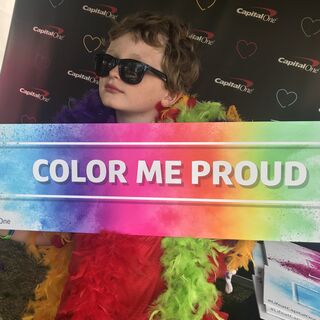Gender
Coming Out at School: Do Parents Need to Know?
What are the limits of student privacy at school?
Posted October 27, 2021 Reviewed by Lybi Ma
Key points
- Outing a student to their family can put them at risk for harm. Students have a constitutional right to privacy.
- Professional ethics require teachers to keep students physically and emotionally safe.
- School staff should work to maintain positive and lawful communications with family members.
When I was a first-year teacher, I was called into the main office one spring morning and given an ultimatum by the head of school: If students confided in me anything of a “personal nature” I needed to inform the administration immediately. This interaction occurred because a student had come out to her parents as lesbian and told them that I provided support to her, including LGBTQ-themed books. Her parents then called the school to complain about me. I refused the ultimatum as I did not want to violate the trust I had built with my students so I was fired for insubordination.
Fast forward to 2021: I was giving a workshop this summer to a group of educators that included GSA advisors and someone asked the question: “Don’t you inform the parents if a student comes out? If that was my kid, I would want to know.” A similar question came up in an online forum this fall: “My district believes they have to tell parents and I believe that is against the law.” Who should be informed when a student comes out at school?
There are several issues we need to consider:
- Student safety
- Professional ethics
- Federal laws: FERPA and Title IX
Student Safety

I put student safety first because it is always foremost in any advice or decisions I make when working with youth and educators. Whether a student is coming out about their gender identity or sexual orientation at school, they are doing it because they likely feel safe and affirmed with those people, in that space. It is also possible that they are not sure if they will be safe and affirmed if they come out in other spaces at school or at home. In some cases, they know quite clearly that they could be subject to violence, rejection, or even homelessness if their parents or guardians find out. It is imperative that when a student comes out at school, we respect their choices about who to tell and when. This means it cannot be our decision about who to inform.
Professional Ethics
This relates to my second point about professional ethics. As educators, we don’t have a single code of ethics, but state licensing boards and national organizations do have basic principles that educators work from. For example, the California Commission on Teacher Credentialing includes a standard that requires that teachers: “2.3 Establish and maintain learning environments that are physically, intellectually, and emotionally safe,” and The National Education Association’s first ethical standard is “Commitment to the student,” which includes the following statement: “4. Shall make reasonable effort to protect the student from conditions harmful to learning or to health and safety.” These standards call on educators to ensure that we are keeping students emotionally and physically safe as well as protecting them from harm to their health and ability to learn. Outing a student would violate their trust with you and thus their feelings of safety at school. It could also put them in harm’s way at home. Research has consistently documented the extensive nature of homelessness and violence experienced by LGBTQ youth [see references below].
Federal Laws
Third, sharing private information about a student without their consent could violate state and federal laws, including the Family Educational Rights and Privacy Act, or FERPA. Until a child is 18, parents do have the right to review any official records maintained by the school, but schools must not divulge “identifying” information to anyone without a “legitimate educational interest.” This is an important distinction as most of the time when a student comes out, official records are not impacted, therefore parents do not need to be notified. However, if a student wants to change their name in their official school record, the parents would need to be informed. The ACLU released an open letter in 2020 detailing the privacy rights of LGBTQ youth at schools and the legal precedents supporting them. The letter states:
“Students have the constitutional right to share or withhold information about their sexual orientation or gender identity from their parents, teachers, and other parties, and it is against the law for school officials to disclose, or compel students to disclose, that information. Even when students appear to be open about their sexual orientation or gender identity at school, it remains the student’s right to limit the extent to which, and with whom, the information is shared.”
It also goes on to say that outing a student could be interpreted as an act of sex discrimination and a violation of Title IX. Students, or any supportive ally, can file a complaint with the Office for Civil Rights if they feel student rights have been violated. The ACLU letter provides valuable legal frameworks and clear information for students and educators with questions about their rights and responsibilities.
Communicating With Families
It is still important for schools to maintain positive communication and working relationships with family members. A consortium of LGBTQ advocacy groups and educational associations produced a guide for Colorado educators that includes the following advice about working with families:
“When contacting parents or guardians of a transgender or gender nonconforming student, school personnel should use the student’s legal name and the pronoun corresponding to the student’s gender assigned at birth unless the student, parents, and or guardian has indicated otherwise... In some cases, notifying parents of the student carries risk, such as being kicked out of the home or experiencing rejection from their family. Prior to notification of the family, school staff should work closely with the student and consider the health, well-being, and safety of the student.”
Detailed guidance from the Massachusetts Department of Education also offers helpful considerations in communicating with families, particularly when a student is the target of bullying and harassment:
“School officials should use their discretion in discussing the incident and avoid sharing information that might endanger the mental or physical health and safety of the student. Where the student has not disclosed his or her sexual orientation or gender identity, expression, to his or her parents and the student believes he or she may be at risk if it is disclosed, to the extent possible, discussion should focus on facts regarding the student's involvement as a target or aggressor and on safety planning, not on information that reveals the actual or perceived gender identity or sexual orientation of the student. As in all bullying incidents, school officials should offer resources and support to the student and family.”
This guidance is a great starting point for adults working with youth around these complex and often delicate topics.
Action Steps
I was devastated when I lost my job, but I know I did the right thing to uphold professional ethics and defend my students’ right to privacy. I hope these resources provide you with the support and information you need when working with colleagues, students, and families of LGBTQ youth in your community. If you are working with school administrators or have school policies that contradict the information provided here, I suggest sharing the ACLU’s open letter as an opportunity to educate those you are working with. If that doesn’t work, try:
- Writing a letter to the school board
- Connecting with local LGBTQ advocacy organizations
- Contacting your local ACLU
- Or GLSEN chapter
It is important to build connections and networks of allies interested in taking steps to update school district policies and practices. LGBTQ youth are navigating enough challenges in their lives, let's respect their privacy and let them decide when they are ready to come out.
References
Abramovich, A. (2016). Preventing, Reducing and Ending LGBTQ2S Youth Homelessness: The Need for Targeted Strategies. Social Inclusion, 4(4). doi:10.17645/si.v4i4.669
Robinson, B. A. (2018). Conditional Families and Lesbian, Gay, Bisexual, Transgender, and Queer Youth Homelessness: Gender, Sexuality, Family Instability, and Rejection. Journal of Marriage and Family, 80(2), 383-396. doi:10.1111/jomf.12466
Kosciw, J. G., Clark, C. M., Truong, N. L., & Zongrone, A. D. (2020). The 2019 National School Climate Survey: The experiences of lesbian, gay, bisexual, transgender, and queer youth in our nation’s schools. GLSEN: New York, NY. Retrieved from: https://www.glsen.org/sites/default/files/2020-10/NSCS-2019-Full-Report…




